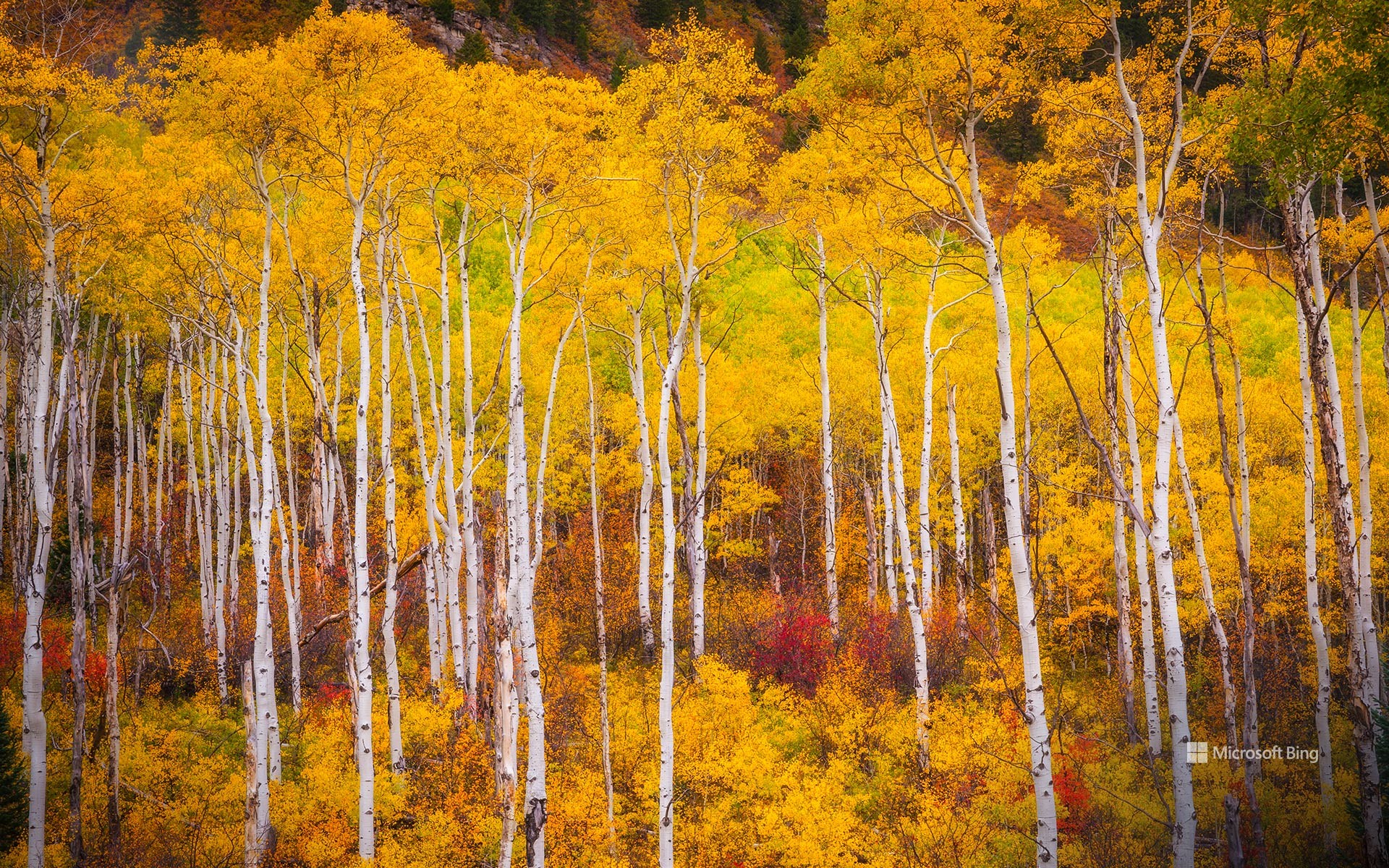马布尔附近的白杨树,科罗拉多州,美国 Aspens near Marble, Colorado (© Jason Hatfield/TANDEM Stills + Motion)

马布尔附近的白杨树,科罗拉多州,美国 Aspens near Marble, Colorado (© Jason Hatfield/TANDEM Stills + Motion)
色彩斑斓的秋天 Colorado in full color
马布尔附近的白杨树,科罗拉多州
纤细的白色树干直插云霄,即使是微风拂过,树叶也会摇曳生姿——白杨树是美国荒野的象征。它们广泛分布在美国西部各州,尤其是犹他州和科罗拉多州。这些树是北美分布最广的本土物种。正如今天这张在科罗拉多州马布尔附近拍摄的照片一样,白杨树林的秋景令人叹为观止,白杨树叶在秋天会变成明亮的金黄色,点亮整个景观。白杨树不仅美丽,而且在生物学上也令人着迷。它们以大型群落的形式生长,起源于单一的根系,是地球上最大的生物之一。树群中的每棵树都具有相同的遗传特征。当白杨树被砍伐或受损时,根系会继续存活,从而使新的枝条萌发并生长,这有助于形成一个弹性的网络,可以在野火等恶劣的条件下生存。这种物种能迅速在附近被烧毁的地区生根发芽,即使野火燎原也能再生。白杨树不仅仅是赏心悦目的风景,它们更象征着坚韧不屈的精神。
Aspens in the White River National Forest, Colorado
Slender white trunks reaching skyward and leaves fluttering even in the gentlest breeze—aspen trees are a symbol of the American wilderness. Found across the western states, especially in Utah and Colorado, these trees are the most widespread native species in North America. Their fall foliage is breathtaking, with their leaves turning a vibrant yellow that lights up the landscape, as seen in today's photo, which was taken in the White River National Forest, Colorado.
Aspens are not only beautiful but also biologically fascinating. They grow in large colonies that originate from a single root system, making them some of the largest living organisms on Earth. Each tree in the colony is genetically identical. When an aspen tree is cut down or damaged, the root system remains alive, allowing new shoots to emerge and grow, which helps create a tenacious network that can survive harsh conditions, including wildfires. This species quickly colonizes areas that have been recently burned down and can regenerate even after frequent fires. Aspen trees are more than just a treat for the eyes; they are an example of nature's resilience.
评论已关闭